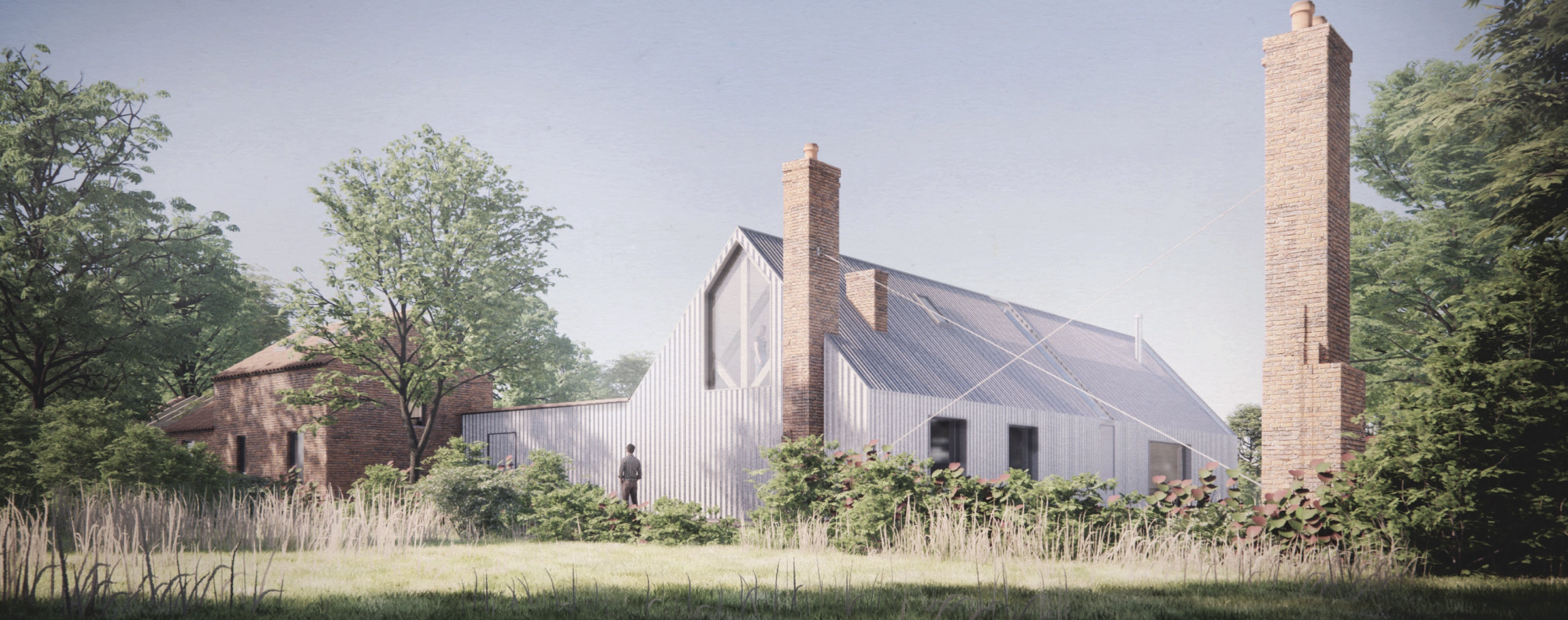DOMstudies: St. Luke Old Street
The impact of St. Luke’s on many generations of Londoners cannot be understated. Built between 1723 and 1733, St Luke's is one of fifty churches commissioned under Queen Anne's Act of 1711 to design churches that showcased the baroque grandeur of Britain's capital.
The main building was designed by John James, though the obelisk spire, west tower and flanking staircase wings were by Nicholas Hawksmoor, a protégé of Sir Christopher Wren, who caused masses of controversy with his unique vision for the project. The modest, strongly geometrical form of the obelisk with the statue of a gold dragon sitting atop -which cockney legend claims to be a plague-carrying flea- shocked London at the time and many associated the design with the occult. Carved out of white stone, the fluted structure rose imposingly over Islington and as it lined up with the end of the bustling Whitecross Street, it punctuated this part of the city.
Throughout its long and storied history, St. Luke's has weathered its fair share of challenges. Although renovated in 1877, the church suffered slow decay over the next two hundred years, and part of the structure was severely damaged in the Blitz of 1940. Finally, in 1959, the church was declared a dangerous structure. Its roof was removed, and the shell was left derelict for 40 years despite its status as a Grade I-listed building.
Today, the church stands as a symbol of resilience and renewal, a testament to the enduring legacy of the architect’s vision. Thanks to the tireless efforts of preservationists and the local community, St. Luke's was restored and converted into a music centre by Levitt Bernstein Architects in 2003. Operated by the London Symphony Orchestra, as a concert hall and a rehearsal, recording and educational resource, the interior has become a “music box”. A giant steel and timber canopy placed over and on top of the old stone walls guarantees the integrity of Hawksmoor and James's design and even the eroded obelisk spire has been protected and adapted for use.
The venue hosts an incredible range of events, from classical concerts to contemporary music performances. The Jerwood Hall, the main performance space, features excellent acoustics and can accommodate audiences for concerts, recitals, and other musical events. Additionally, LSO St Luke’s offers music education programs and collaborates with local organizations to promote access to music and cultural activities within the community. For anyone curious about instrumental music, regardless of their age and background, their doors are even open for short, informal concerts on selected Friday lunchtimes.
Additionally, if you’re looking for a relaxing group activity, on Monday evenings during term time you can participate in the Community Gamelan Group which require no musical training. Pieces are performed in repeated sequences, so players only need to learn short phrases. There are no soloists within a group and everyone learns to play all the instruments, from the simplest gong to the more intricate rhythms. Basic instructions like when to start, stop, speed up, slow down etc are given by musical cues from the group leader.
The group was formed in 2003 for the opening of LSO St Luke’s, and is led by its director Andy Channing, Senior Teaching Fellow at the School of Oriental and African Studies.
Beyond its architectural significance, St. Luke's has played a vital role in the lives of generations of Londoners. From its Georgian origin filled with controversies to its tragic decaying during the post-war era and the recent flourishing that puts art and community in the forefront, St Luke is a window into the city’s history. It has even captured the imagination of artists, including renowned British painter L.S. Lowry, who famously painted the church in his signature style, highlighting its prominence in the Old Street landscape.
If you’re staying at The Warehouse or The Duplex, make sure to pay a visit. And if you’re lucky you might even catch a fabulous concert!
Photography by Voytek Ketz













